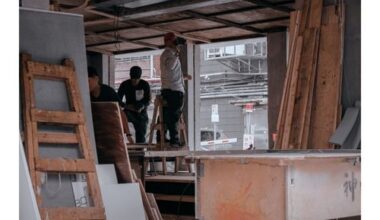Plunge pools are undoubtedly something you’ll come across as you research your swimming pool options. You may have many questions, such as: what is a plunge pool? And the cost of the following prefab plunge pools: fiberglass plunge pool cost. A plunge pool is a small swimming pool that measures 10 x 22 feet and has a depth of about 6 feet. They can be constructed of concrete, fiberglass, or vinyl liners. They are intended for the recreation and cooling off rather than swimming.
If you’re still interested in plunge pools, we recommend that you keep reading. In this comprehensive guide, we’ll cover everything you need to know about plunge pools, from their size and cost to maintain, and more. You won’t want to miss out on it!
What Plunge Pool?
First, let’s make sure you understand what a plunge pool is. Plunge pools, also known as dipping pools, are small swimming pools that resemble hot tubs but are typically larger. A plunge pool’s average width is about 10 feet, and it can be 22 feet long or shorter. The pool is usually no deeper than six feet. You could, however, have a plunge pool as small as 6.5 feet by 9 feet.
When compared to the average swimming lap pool, which is 30-50 feet long, you can see how a plunge pool is much smaller. Still, the pool isn’t small enough to be used by just one person.
Related Articles: TRUST ATTORNEY: Do I Need One?
Some hot tubs can hold up to eight people at once, so your plunge pool should have enough room for you, your spouse or partner, and however many children you have. The quarters are closer together than in a lap pool, but this only adds to the sense of family togetherness.
What are your options in a plunge pool?
On a hot summer day, these pools are ideal for quickly jumping in and beating the heat. You can also unwind and enjoy the beauty of summer by sitting in the pool. Do you prefer to swim more actively in your pool? Not a problem. Plunge pools are ideal for low-impact aquatic workouts.
What size are plunge pools?
The size of these pools can vary greatly because they can be built on-site, just like traditional pools. However, plunge pools are typically 6 1/2 to 10 feet wide and 10 to 22 feet long. The depth ranges from 5 1/2 to 7 feet, with a nearly flat bottom. A 10×20-foot plunge pool is a popular size. Models that are pre-cast or pre-fabricated can be as small as 7×13 feet and 5 feet deep.
How do plunge pools get their shape?
Plunge pools, like traditional pools, can be custom built in your backyard or manufactured elsewhere. Custom versions are typically created by forming the earth and then covering it with a vinyl liner to give it an in-ground appearance. Off-site pre-cast versions made of fiberglass, concrete, or occasionally metal, such as stainless steel or copper, are craned into your yard and dropped into an excavated hole. There are also above-ground plunge pools made of concrete or fiberglass. A semi-in-ground plunge pool, with the top 12 to 18 inches above ground, is another popular option. When completed, typically in stone, this allows for a short sitting wall around the pool.
Plunge Pool Varieties
While they can take any regular pool shape—oval, round, or rectangular—the rectangular shape is often the most space-efficient. Stairs, a sitting ledge, or a splash pad can be added to any style, but it’s often easier to get those elements in a pre-made version.
How Much Does a Plunge Pool Cost?
A plunge pool can cost anywhere from $10,000 to $50,000, according to HomeAdvisor 2021 prices, with a national average of $20,000. Concrete is one of the more expensive building materials. A concrete dipping pool costs between $20,000 and $35,000, according to HomeAdvisor.
Related Articles: Best Paying Jobs In Real Estate Investment Trusts (REITs) | Top 13 Picks
A vinyl-lined plunge pool costs $10,000 to $18,000, whereas a fiberglass plunge pool is arguably of higher quality and costs $10,000 to $22,000. Prefab swimming pools are frequently made of fiberglass with a single shell, so going prefab would reduce the cost of your plunge pool.
Small Plunge Pool Cost
A small inground plunge pool will cost around $25,000, but if you want a high-quality model in one of the largest sizes, this can rise to $35,000 or even $50,000. The installation process is identical to that of a full-sized swimming pool, so the costs are comparable.
You can save a lot of money if you choose an above-ground plunge pool, which typically costs between $2,000 and $7,000. Of course, DIY plunge pools can be purchased for even less, but this is frequently a false economy due to the level of maintenance required and the possibility of errors during the installation process.
You should also keep in mind that every pool, even a small plunge pool, must be surrounded by fencing in accordance with Australian Standard 1926, so this cost should be factored into your budget.
Any pool, including a plunge pool, is an expensive purchase, but the advantages of owning a plunge pool are numerous. It is an asset that you can enjoy for a long time, improving your quality of life and making your property even more beautiful.
Prefab Plunge Pool Cost
A prefab pool is a swimming pool that is fully manufactured in a facility and then shipped to your home for installation. These pools are typically installed much faster than on-site pools such as shotcrete pools and vinyl liner pool. Let’s take a closer look at the top two types of permanent prefab pools: fiberglass pools and precast concrete pools.
Cost of a Prefab Plunge Pool?
Prices for prefab plunge pool cost can range from $20,000 for small plunge pools to $50,000, and the price is less compared to fiberglass. Because of the smaller size and lower labor costs, the cost of a precast concrete pool will most likely be less than that of a traditional concrete pool. Precast pool prices can also rise as more customized features and installation methods are added.
Fiberglass Plunge Pool Cost
Fiberglass pools are one-piece, prefabricated swimming pools made from various types of fiberglass and resins. These materials result in a pool shell that is more durable and flexible, with a smooth and long-lasting surface. Fiberglass plunge pool cost between $40,000 and $85,000 on average, but can cost much more with expensive upgrades and accessories.
Related Articles: What are the Best Dental Insurance Plans in 2022?
A fiberglass plunge pool can typically be installed in 2 to 4 weeks, but the pool is usually in the ground and full of water by day 2. Fiberglass pools, like precast concrete pools, can be installed inground, semi-inground, or completely above ground.
The Pros and Cons of Plunge Pools
We’re confident you’re closer than ever to decide whether a plunge pool is right for you. This section of pros and cons will assist you in making your decision.
Pros
Cost Savings
If you’ve always assumed that a pool was out of your price range, plunge pools may be the ideal compromise between price and size. If your plunge pool is made of vinyl, it may cost less than $20,000 to build. As previously discussed, the average full-size pool starts at $28,000 but can quickly rise to much higher prices depending on the material you choose.
It looks fantastic.
Plunge pools have an undeniable allure. Because you’re saving so much money on the cost of your pool compared to a full-size pool, you might consider investing in a nice pool deck, beautiful landscaping, or even LED lighting in your pool to make it even more beautiful.
Maintenance is less difficult.
We’ll go over plunge pool maintenance in greater detail in the following two sections of this guide, but you’ll be relieved to know that it’s not as time-consuming as maintaining a full-size swimming pool. What’s the reason? Simply put, there is less to a plunge pool, which means less time spent on maintenance. With that extra time, maybe you’ll go for a swim in your new plunge pool!
Installation Options
We also like the variety of installation options that a dipping pool provides. You can get an in-ground or above-ground plunge pool, and either would look great inside your home.
Related Articles: Goosehead Insurance Reviews 2022: Pros and Cons, Best Products
Cons
It is not suitable for swimming or volleyball.
A plunge pool is an excellent choice if you’ve always wanted your own swimming pool for lounging, tanning, and floating. If you’re an active person who enjoys diving, swimming, and pool volleyball, you’re better off budgeting for a full-size swimming pool. These activities are not appropriate for a plunge pool’s small size.
The water gets shallower.
The depth of a plunge pool is frequently less than that of a full-size pool. Often, it is only 6 feet or so. You’ll need to remind your guests, especially the children, that they are not permitted to dive into your plunge pool. It’s simply not safe.
Large gatherings are not permitted.
A plunge pool is not for you if you have always imagined yourself throwing epic pool parties that are the talk of the neighborhood. It’s impossible to cram a dozen or more people into one of these pools without feeling claustrophobic.
How Much Does a Plunge Pool Cost to Maintain?
Maintaining a full-size swimming pool takes a lot of time and effort, but it doesn’t have to be expensive. According to HomeAdvisor’s 2021 costs, the average pool owner will spend between $109 and $347 per season on pool maintenance. Because your plunge pool is smaller than the average, you can reduce your costs even further.
Conclusion
Plunge pools, also known as dipping pools, are similar in size to hot tubs and are an excellent place to unwind. They’re ideal if you enjoy splashing around and aren’t preparing for the 200m Olympic freestyle. Plunge pools are a viable option for many homeowners due to their ease of installation, low cost, and simple maintenance. We hope this guide has helped you decide whether or not to purchase a plunge pool!
Frequently Asked Questions
What is the smallest size plunge pool?
Aurora Plunge Pool is the smallest Plunge Pool in our rectangle pool collection. The Aurora, with dimensions of 2.6m x 1.24m x 1.49m, is ideal for those who are short on space or simply want somewhere to cool off.
Are plunge pools worth it?
The most obvious advantage of a plunge pool is that it allows people who do not have enough space for a traditional swimming pool to install a pool in their backyard. Plunge pools are naturally less expensive to buy and install, as well as to operate in terms of heating, filtration, and cleaning.
How deep can a plunge pool be?
The size of these pools can vary greatly because they can be built on-site, just like traditional pools. However, plunge pools are typically 6 1/2 to 10 feet wide and 10 to 22 feet long. The depth ranges from 5 1/2 to 7 feet, with a nearly flat bottom.
What is the point of a plunge pool?
A plunge pool is a small, usually shallow pool designed for wading or lounging. They are ideal for people who enjoy sitting on the steps of a pool and sipping a glass of tea in the summer, or for those who live in extremely hot climates and use their pools primarily to cool off.
Related Articles:






